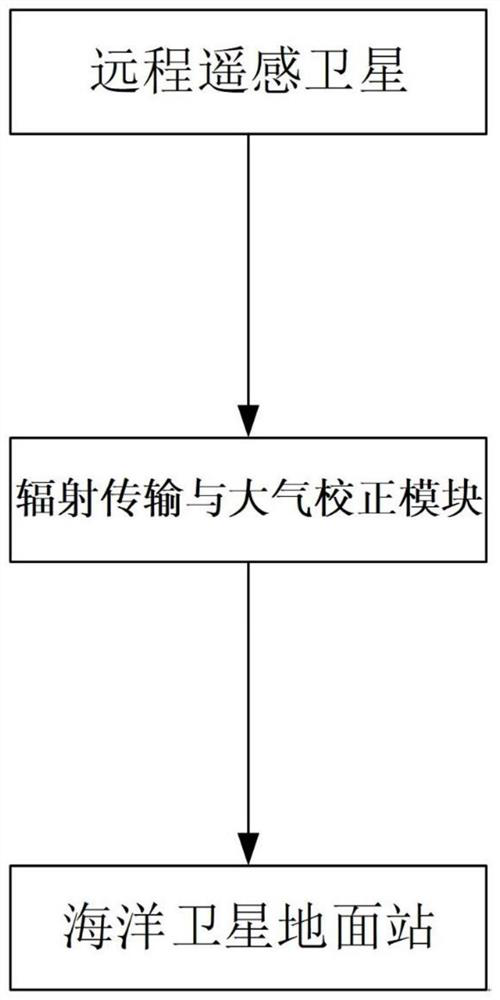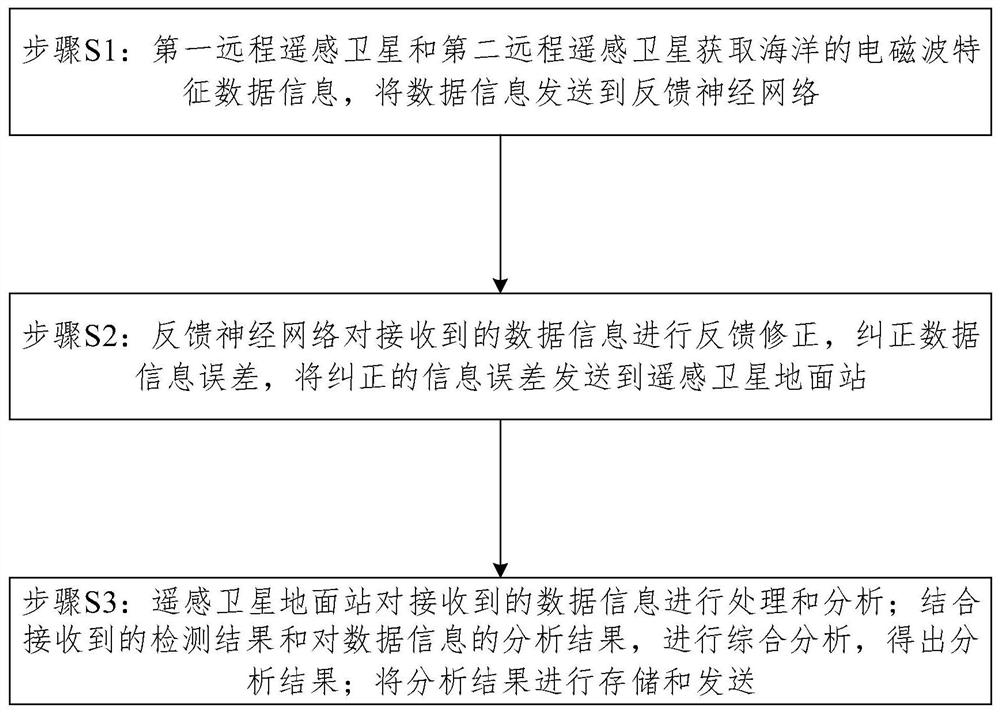Marine sediment testing system and method based on deep learning
A marine sediment and testing system technology, applied in the field of marine water quality testing, can solve problems such as inaccurate analysis results
- Summary
- Abstract
- Description
- Claims
- Application Information
AI Technical Summary
Problems solved by technology
Method used
Image
Examples
Embodiment 1
[0077] Such as figure 1 As shown, a deep learning-based marine sediment testing system provided in this embodiment includes: a marine remote sensing satellite ground station, a remote remote sensing satellite, a feedback neural network connecting the marine remote sensing satellite ground station and a remote remote sensing satellite, and a running The radiative transfer and atmospheric correction module of the feedback neural network;
[0078] There are two groups of remote sensing satellites, namely the first remote sensing satellite and the second remote sensing satellite;
[0079] It is characterized in that the system also includes: the first long-range remote sensing satellite and the second long-range remote sensing satellite acquire the electromagnetic wave characteristic data information of the ocean, the electromagnetic wave characteristic data information is collected by the sensor, and the sensor sends the data information to the radiation of the operation feedback...
Embodiment 2
[0125] The feedback neural network includes: input unit, fuzzy unit, rule calculation unit and output unit; input unit: the number of input data information is n, the corresponding number of nodes is n, and the output of this unit is the value of input data information, that is, i=1 , 2,..., n, where: xi is the value of the i-th input data information; fuzzy unit: use the membership function to realize the fuzzy input data information, the node input is the output of the input unit, through the corresponding membership function Fuzzy the node input and take the product of these values as the output of the node, the membership function is: in is the membership function of the i-th input sample parameter to the j-th neuron, is the mean value, is the reciprocal of the standard deviation parameter, n is the number of input vectors; rule calculation layer: each node represents a fuzzy rule, and the multiplication of membership degree is used as the fuzzy rule, through the...
Embodiment 3
[0127] On the basis of the previous embodiment, the first remote sensing satellite and the second remote sensing satellite acquire the electromagnetic wave characteristic data information of the ocean, and after sending them to the feedback neural network, the feedback neural network fuzzifies the received data information, Errors and missing values are corrected.
[0128] Specifically, the deposition rate of marine sediments varies greatly in different parts of the seafloor. The inhomogeneity of deposition rate reflects the difference of depositional environment, which shows great difference in deposition type and deposition thickness. The main factors affecting the deposition rate are material source, climate, tectonic process and so on. In sea areas with sufficient material sources and abundant marine biological products, the sedimentation rate is high, and vice versa. Since periods of rapid deposition often alternate with periods of slow deposition, no deposition or er...
PUM
 Login to View More
Login to View More Abstract
Description
Claims
Application Information
 Login to View More
Login to View More - R&D
- Intellectual Property
- Life Sciences
- Materials
- Tech Scout
- Unparalleled Data Quality
- Higher Quality Content
- 60% Fewer Hallucinations
Browse by: Latest US Patents, China's latest patents, Technical Efficacy Thesaurus, Application Domain, Technology Topic, Popular Technical Reports.
© 2025 PatSnap. All rights reserved.Legal|Privacy policy|Modern Slavery Act Transparency Statement|Sitemap|About US| Contact US: help@patsnap.com



